If your hip flexors perpetually feel like two rubber bands ready to snap, you’re not alone. Whether you’re a regular at your local gym or an avid runner, if you’re sitting all day, there’s a good chance you struggle with tight hips. Odds are, you’re skipping out on crucial hip-opening stretches for a few butt kicks, hamstring stretches, and arm swings. But here’s the thing: Half-assed stretching doesn’t just make you bad at yoga; inflexibility can have some serious consequences for your health and ability to heave heavy metal.
”When it comes to building true strength, it all starts at the hips,” says Louis Chandler, the head trainer at Alo Wellness Club. “They’re your power hub, the connector between your upper and lower body. I’m always hammering home this point: In squats, deadlifts, and lunges, your hips drive the movement. They’re responsible for generating force and transferring it efficiently through the whole body.”
When added to a full warmup, hip-opening stretches (and hip flexor exercises) can elevate exercise performance and reduce your risk for injury, according to a review published in Applied Physiology, Nutrition, and Metabolism. When your hips are loose, you can sink properly into deep squats, and hinge smoothly during deadlifts. Your performance doesn’t suffer, and you’re not jerking around like the Tin Man.
To combat tight-as-hell hips, Joe Holder—Nike Master Trainer and founder of The Ocho System—turns to five key stretches. These dynamic moves will keep you loose, limber, and ready for anything.
Directions
Start with some soft tissue work to massage out any knots and tightness. Foam roll or use a lacrosse ball to work over your quads, adductors, glutes, and more, Holder recommends. Before you start, learn how to do self-massage and check out the best foam roller moves. Then move on to these hip-opening stretches.
Just remember: “You can do all the hip openers you want, but if you’re not seeing any improvement in the tightness in your hips, then there’s an increased likelihood your hips are protecting you from inefficient core and/or glutes,” Holder says. Take note: Your tight hips could be masking a problem originating someplace else in your body, and you may need to address these imbalances and weaknesses to create synchrony in your body.
1. 3D Hip Opener
Ariel Foxie
Ariel Foxie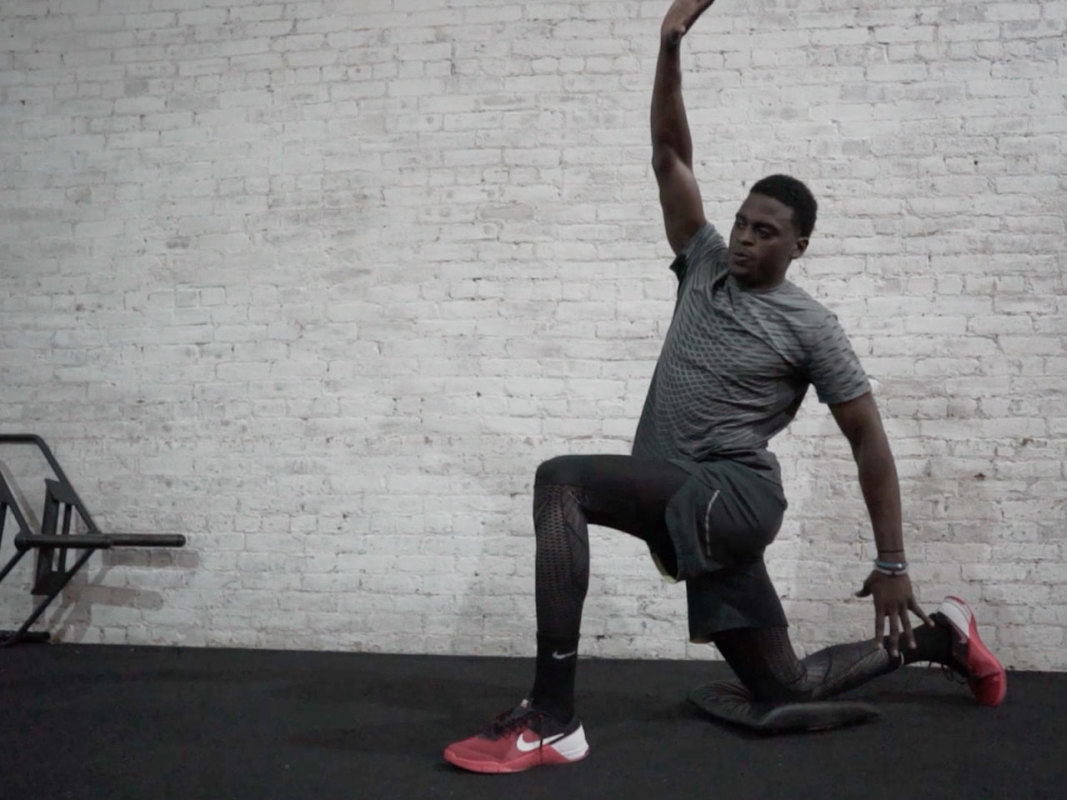
Ariel Foxie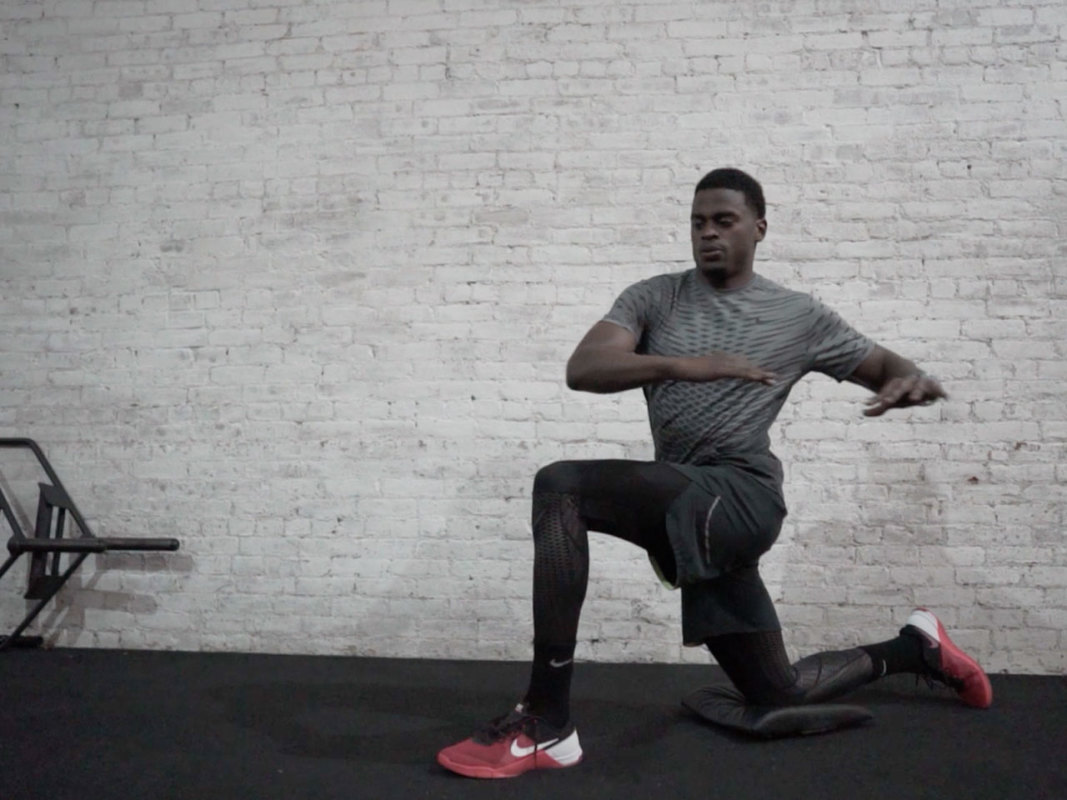
What It Works
Hip flexors, lower back, and trunk.
How to Do It
- Start in a half-kneeling position—left leg out in front of you, foot planted, right knee down.
- You can place a pad underneath your knee if need be.
- Make sure your left hip is at 90 degrees, and your right knee is underneath your hip.
- Keeping a neutral position (don’t let your back arch) and engaging your abs, lightly push forward into your front knee.
- Make sure your torso stays tall, and you’re not just bending into your front knee.
- Using a scooping motion, starting low, on either side of your legs, raise your arms so your hands reach up toward the ceiling.
- Hold for 20 seconds.
- Return to the start position.
- From here, reach your left hand back toward your right heel and stretch your right arm overhead as you bend slightly into your left side.
- Hold for 20 seconds.
- Return to the start position once more.
- Lightly push forward into your front (left) leg again as you slowly rotate your torso to the left for 20 seconds.
- That’s one rep.
- Complete three reps, then switch and repeat on your opposite leg.
2. “90-90” Drill
Ariel Foxie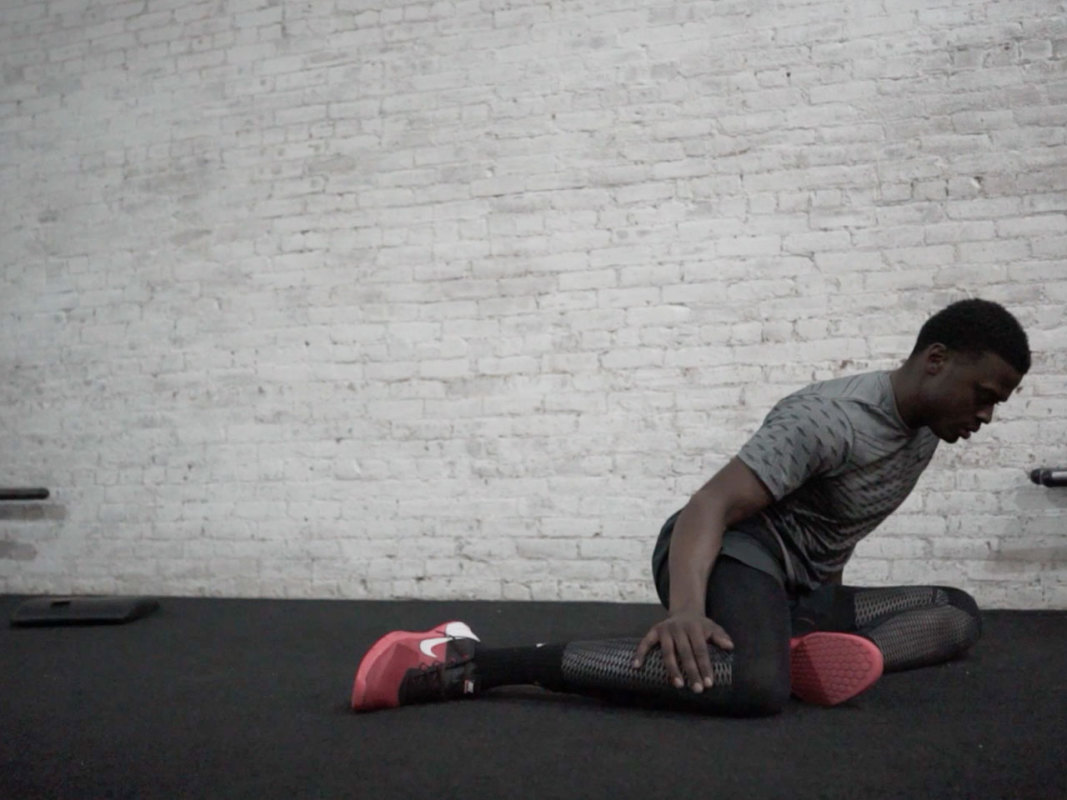
Ariel Foxie
Ariel Foxie
What It Works
Internal/external rotation of your hips and glutes. “This is one of my favorite flow-style hip openers,” Holder says.
How to Do It
- Begin in a seated position with your left leg tucked in front so your knee is bent at 90 degrees (the outside of it is touching the ground, pointing away from your body).
- Bend your right leg so the inside of your knee is touching the ground and just about touching your left foot.
- Your right knee should be bent at a similar 90-degree angle and trailing behind.
- This will look somewhat like a hurdler stretch.
- Position your chest over your left knee.
- Rotate slightly and lean forward and down into your left side.
- Hold for a few seconds.
- Flip the position by unfolding your legs, coming back on your butt, and swapping which leg leads and which follows.
- Now your right leg is tucked in front, your left leg trailing behind.
- Position your chest over your right knee.
- Rotate slightly and lean forward and down into your right side.
- Hold for a few seconds.
- Continue switching back and forth.
- Repeat for one minute.
3. Groin aka “Frog” Rockers
Ariel Foxie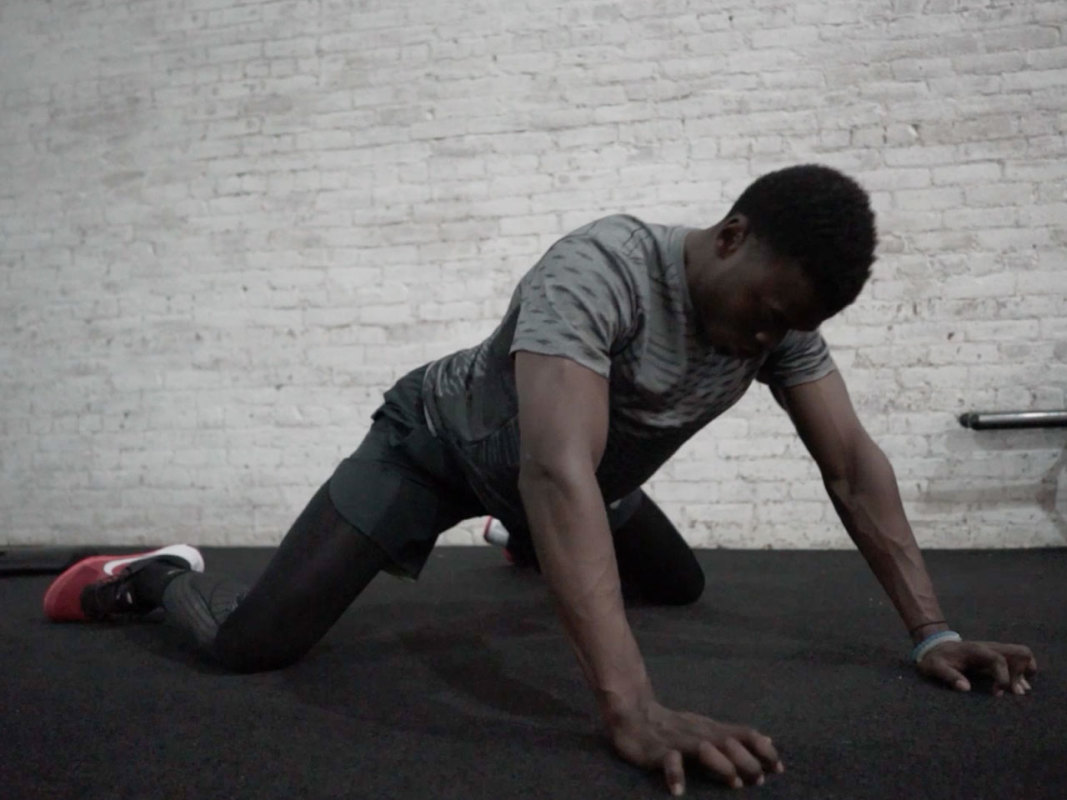
Ariel Foxie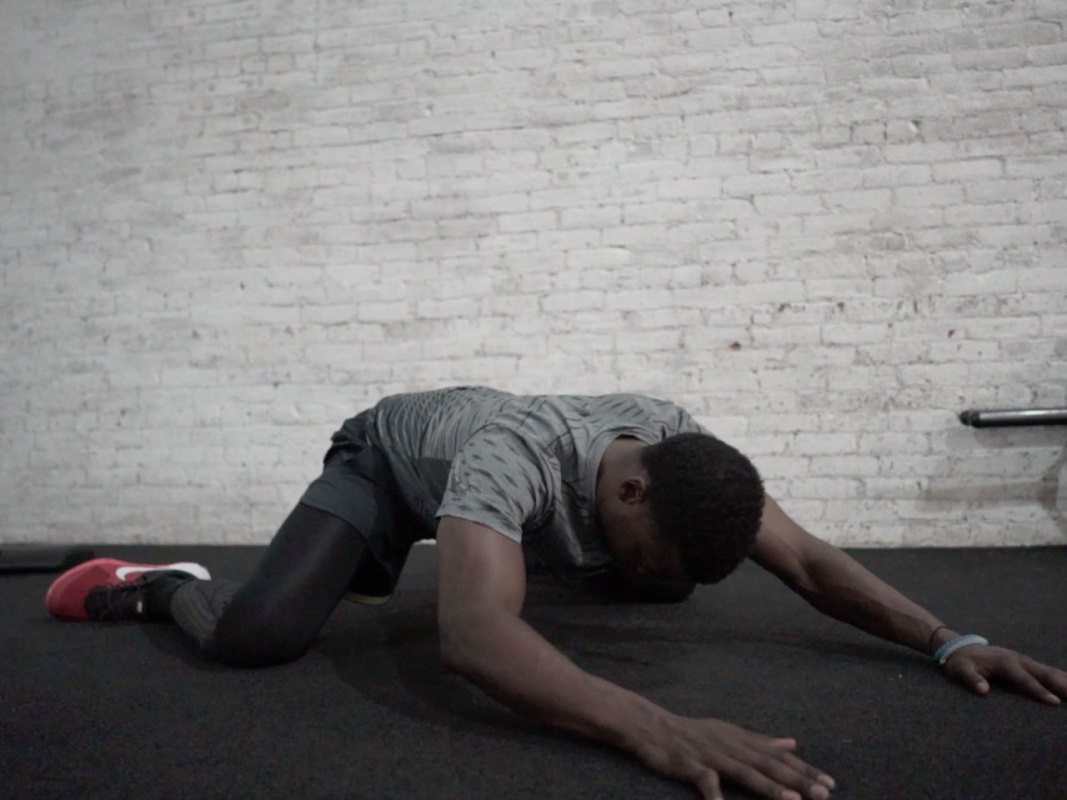
What It Works
Your adductors and groin. “Many people forget about the importance of adductors for proper hip extension and its relation to the glutes,” Holder says. “Basically, if these are too tight, then it can impair your glute function, which is a problem for all athletes and people in general.”
How to Do It
- Begin in a quadruped position (on your hands and knees).
- Spread your knees slightly so they’re positioned just outside your hips.
- Rotate your feet out so you’re resting on the insides of your feet.
- Take a controlled exhale, then sink your hips back toward your heels.
- Make sure to turn your hips “off” (aka relax) and let yourself sit into the stretch.
- Keep your spine and neck neutral.
- Hold the bottom position for three controlled breaths.
- Return back to the start.
- You’ll “rock” back and forth from the top to the bottom of the stretch.
- Complete five reps.
4. “Spiderman” Rotations
Ariel Foxie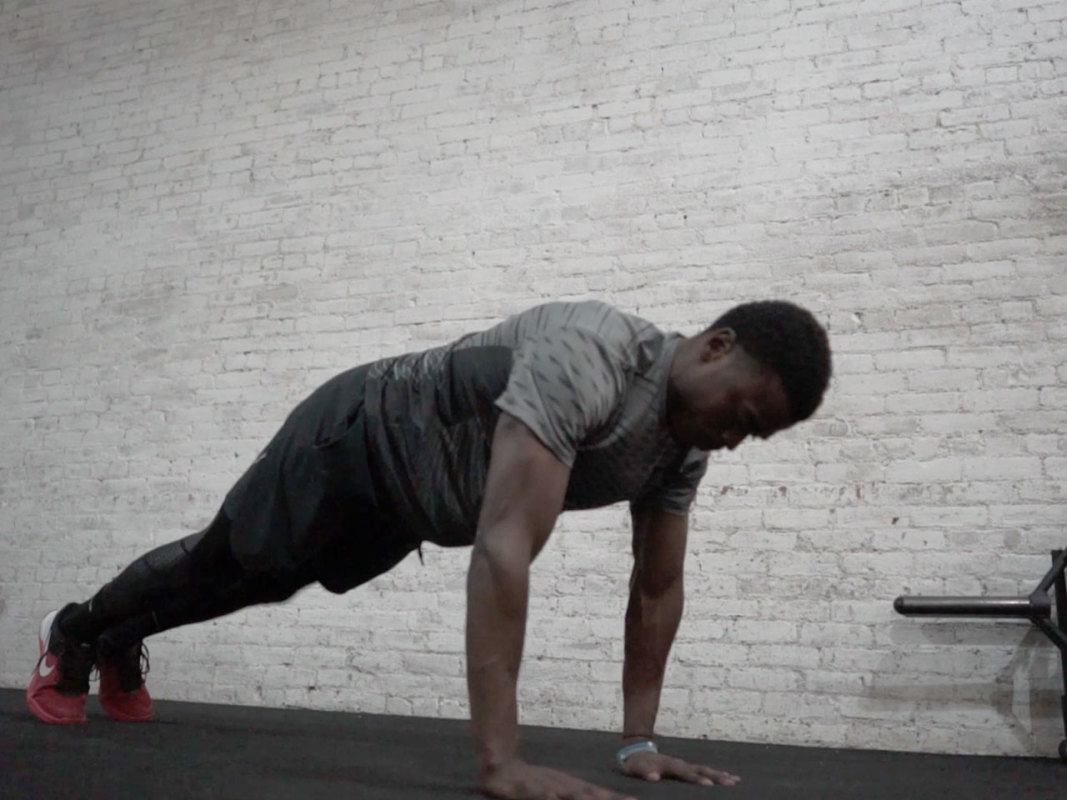
Ariel Foxie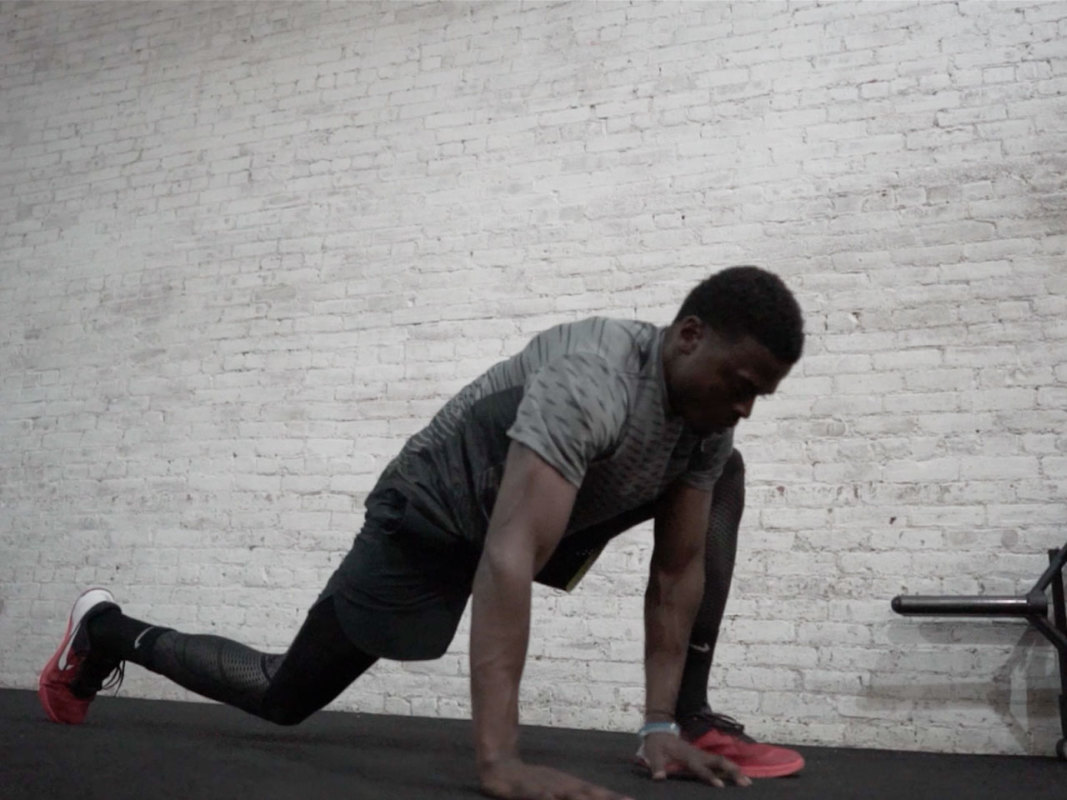
Ariel Foxie
What It Works
Adductors, hamstrings, and glutes.
How to Do It
- Begin in a plank position.
- Step your left foot to the outside of your left hand.
- Pause, then rotate toward your left foot, bringing your left forearm up toward the ceiling as you do.
- Return to start.
- Repeat for 12 reps, then switch sides for two-three sets.
5. Banded Hip Stretch
Ariel Foxie
Ariel Foxie
What It Works
Hip flexors, quads, glute activation.
How to Do It
- Find a “power band” and attach it to a pole, squat rack, or otherwise sturdy object.
- Place your right leg into the band and step back into a slight lunge position with the banded leg behind you.
- The band should be in your “gluteal fold” or “glute tie-in”—the area on your upper leg where your hamstring and glute meet.
- Position your foot far enough back so there’s tension in the band, and it’s taut.
- Begin to lower down into a deeper lunge position.
- Don’t let your back excessively arch or your hips collapse on top of each other.
- Repeat for 10 reps on each side.
6. Bonus: Pulsing Goblet Squat
Ariel Foxie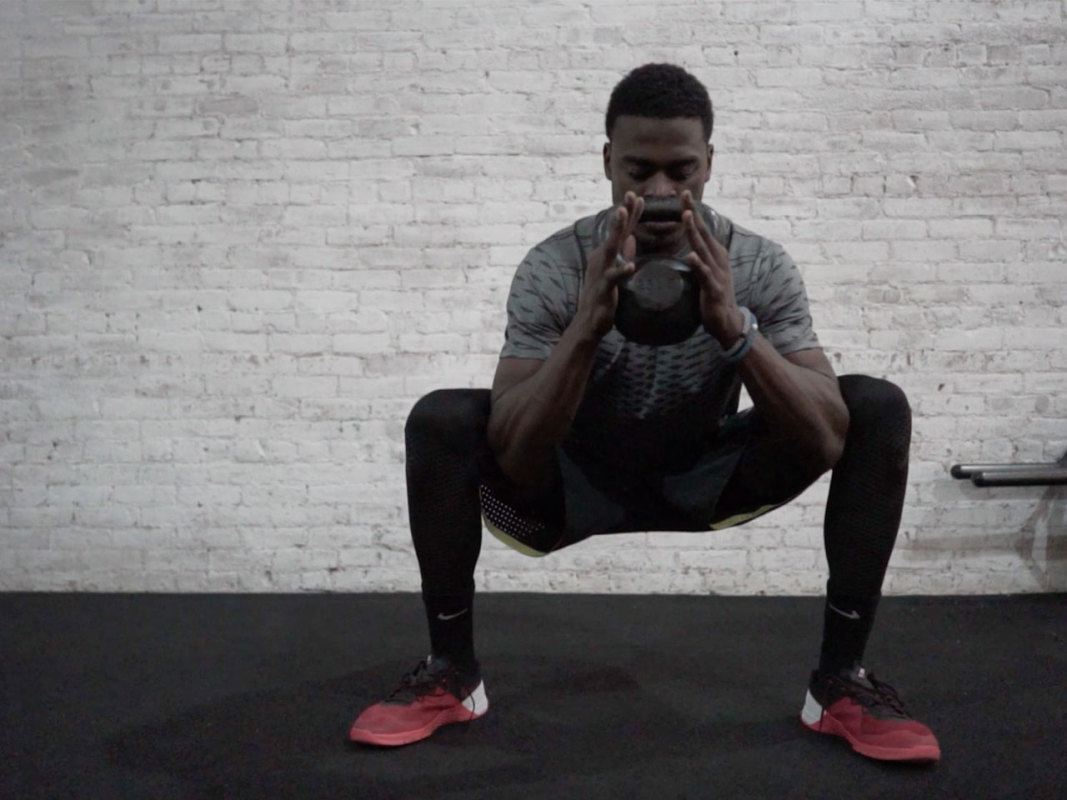
Ariel Foxie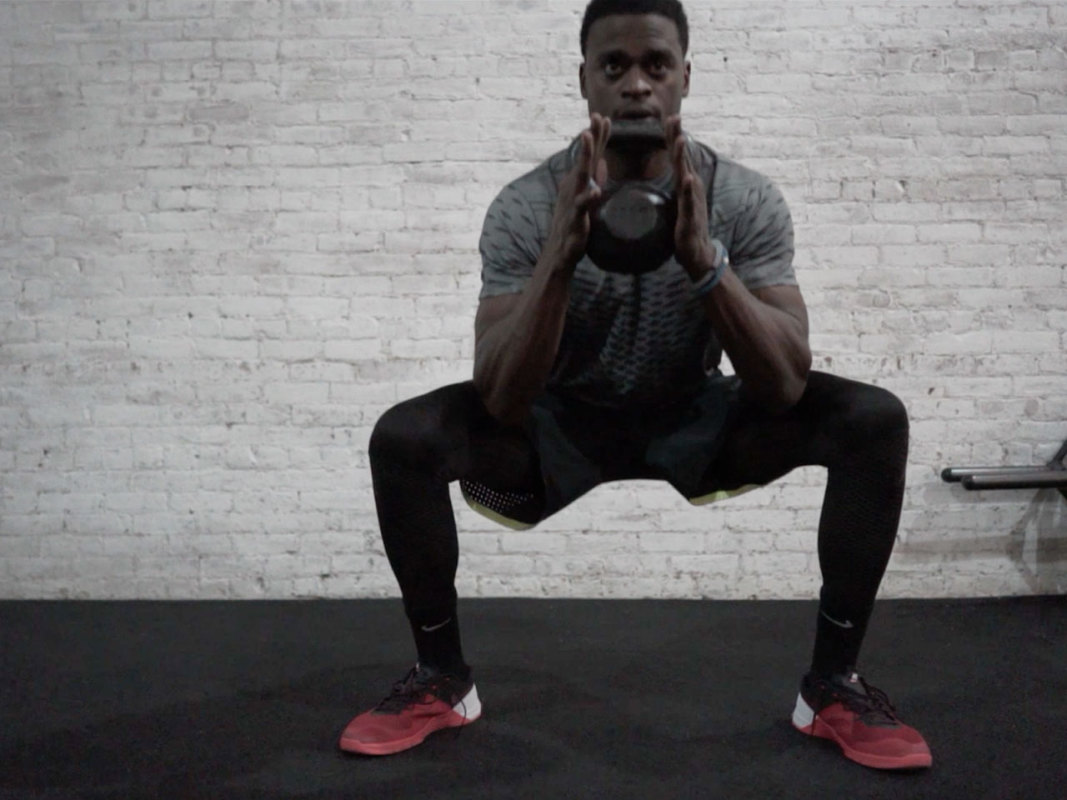
What It Works
“After you perform these mobility exercises, it’s crucial to master basic movement patterns or exercises that may be why your hips are tight in the first place,” Holder says. That means stimulating your core and trunk. You want to wake up your glutes (which, for many people, are dormant from all the sitting), as they house your body’s largest muscle and power your major lifts.
How to Do It
- Begin with your feet a little outside shoulder-width apart and toes pointed out slightly.
- Holding a light kettlebell, lower down into a goblet squat.
- Think about screwing your feet into the floor as you do, maintaining tension in your glutes.
- Pulse up and down, keeping the range of motion minimal.
- Go for three sets of 30 seconds.
Why Is Hip Opening So Important?
Whether you’re just moving around the house or training for your next powerlifting meet, tight, achy hips are the last thing you want. But for athletes, hip mobility isn’t just about feeling better—it directly impacts performance.
“If your hips aren’t moving well, your body will find another way to get the job done—usually by overloading your knees or lower back, and that’s where injuries start creeping in,” says Chandler. “The strongest lifters I’ve worked with aren’t just the ones moving big numbers; they’re the ones moving with precision, control, and mobility. Strong, mobile hips make every lift more powerful, more efficient, and a whole lot safer.”
How Can I Tell if My Hip Flexors Are Tight?
For some people, tight hips can be hard to notice, especially if everyday movements don’t cause pain. But for athletes, the signs often show up too late—through injury or persistent discomfort. To catch it early, Chandler looks for “shallow squats, knees collapsing inward, or a pelvis tipping too far forward or backward,” he says. “If someone feels a pinch in the front of their hip during step-ups or lunges, that’s a huge red flag that we need to stop and reassess.”
